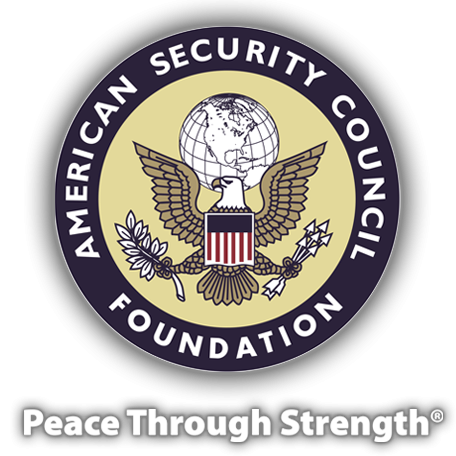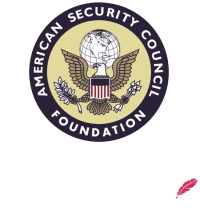Afghan ‘Fighting Season’ Ushers in New Anti-Taliban Groups
FILE - Afghan resistance movement and anti-Taliban forces take a break as they patrol on a hilltop in the Darband area of Anaba district, in Afghanistan's Panjshir province, Sept. 1, 2021.
With the onset of the “fighting season” in Afghanistan, small pockets of anti-Taliban resistance appear to be forming across much of the country.
The development, coupled with a spike in deadly attacks by the Islamic State terrorist group, could threaten the Taliban's hold on power eight months after their takeover of Afghanistan.
In recent weeks, about a half-dozen previously unknown “resistance” groups have announced their existence, vowing to fight the Taliban alongside the National Resistance Front, the only prominent anti-Taliban group.
The new groups have names such as the Afghanistan Freedom Front and the Afghanistan Islamic National & Liberation Movement. But beyond claims made on social media, little is known about their kinetic power.
Researchers who have studied the groups say while they all share the goal of toppling the Taliban’s eight-month-old government, they are hobbled by a lack of unity and coordination.
“It will take some coordination and unity to be able to have a more decisive effect in terms of contesting Taliban governance,” said Peter Mills, Afghanistan researcher at the Institute for the Study of War, who recently published a study of anti-Taliban groups.
As a result, the anti-Taliban groups have been unable to coalesce into a broader resistance movement, said Jonathan Schroden, director of the Countering Threats and Challenges Program at the Center for Naval Analyses (CNA), a nonprofit research and analysis organization.
“In that regard, they still retain relatively low levels of capability overall,” Schroden said.
But lack of coordination is not the only weakness preventing them from becoming an effective fighting force. Among other things, insurgent groups require external support. Yet in contrast to the 1990s, when Russia, Iran and India all backed the Northern Alliance against the Taliban, no country has rushed to the new anti-Taliban cause.
Consequently, in the short term, Schroden said, the groups will likely represent little more than “low-level annoyance” for the much-better-armed and numerically larger Taliban.
For their part, since routing the National Resistance Front from the Panjshir Valley in September, the Taliban have largely dismissed these groups as opposition propaganda.
But insurgencies have a way of persisting for many years, experts say, and what may be a small, inchoate patchwork of cells today could turn into a full-blown, bloody insurgency.
In the long term, several factors could tip the scales in the fight, Schroden said: the anti-Taliban groups’ success in finding a “state sponsor,” their ability to coalesce under a “common banner” and growing popular discontent with the Taliban regime.
Here is a look at the anti-Taliban groups:
National Resistance Front of Afghanistan
Led by Ahmad Massoud, the son of the late Northern Alliance commander Ahmad Shah Massoud, the National Resistance Front of Afghanistan (NRFA) is the “most well-developed” of all the anti-Taliban outfits, said Mills, who estimates it has a few thousand fighters.
In addition to its homebase of the Panjshir Valley north of Kabul, the group operates in the nearby Andarab valley through an affiliate known as the Andarab Resistance Front, a collection of small cells headed by local commanders who have declared loyalty to Massoud.
The two fronts sometimes "interoperate," Mills said.
“We know, for example, that the NRFA was providing support and sending forces to work with the Arab Resistance Front and fighting in the Andarab,” he said.
The NRFA claims to operate in at least a dozen provinces, including Panjshir and Baghlan. In a recent interview with the London-based Afghanistan International Radio, Ali Maisar Nazary claimed the Taliban had “suffered repeated defeats in Panjshir, Andarab and other parts of the Hindu Kush mountains.”
The claim could not be independently verified. But Mills said the NRFA has demonstrated that “they’re able to hold some rural, remote kind of valley, some of this remote, rural mountainous terrain in places like Baghlan, parts of Takhar, Panjshir, parts of Badakhshan.”
Afghanistan Freedom Front
This group popped up on March 11 when it announced its launch on Twitter and Facebook with the goal of “fighting for freedom of the country from occupation.”
It has not disclosed its leadership, but recent reports have indicated that General Yasin Zia, a former defense minister and chief of general staff, is one of the Front's leaders.
Zia, who served as an aide to the late Ahmad Shah Massoud in the 1990s, could not be reached for comment.
In the weeks since the March announcement, the group has claimed attacks on Taliban targets in several provinces, from Badakhshan in the north to Kandahar in the south, offering as proof nighttime videos of fighting.
While the dark videos are not always easy to verify, “we know at least some of these attacks that are being claimed and discussed are real and are happening,” Mills said.
One incident Mills said he was able to confirm was an April 8 video of a daytime hand grenade attack on a police station in Kandahar.
“We were able to see someone actually throwing a grenade into this police station in Kandahar,” Mills said.
Afghanistan Islamic National & Liberation Movement
This is believed to be the only major Pashtun anti-Taliban group. Led by Abdul Mateen Sulaimankhail, a former Afghan Army special forces commander, the group launched on February 16. Sulaimankhail has said he set up the group in response to the Taliban’s alleged killings of former military personnel, calling their amnesty a "lie."
In an April 13 interview with the Afghanistan International TV network, Sulaimankhail claimed his group was engaged in “military and political activities” in 26 of Afghanistan’s 34 provinces, a claim questioned by researchers. Citing security reasons, he declined to say how many members his group has.
The group has claimed responsibility for attacks in its home base of Nangarhar and several other provinces, but it has offered little proof of the attacks, with videos posted on the group’s Facebook page showing armed masked men indoors vowing to fight the Taliban.
While the group’s recent claim of killing a Taliban commander in Helmand appears credible, Mills said its “actual capability seems to be limited.”
Other groups
In recent weeks, small cells of self-styled anti-Taliban fighters affiliated with Tajik warlord Ata Mohammad Noor have appeared in videos purportedly shot in northern Afghanistan.
In a recent video, one of several masked armed men describes them as members of the “high council of resistance,” led by Noor, former Balkh province governor. The man then vows the group is prepared to launch “guerrilla attacks” as soon as they receive orders from Noor, who is believed to be living in exile in the United Arab Emirates.
Noor's nephew Sohail Zimaray was killed in a shootout with Taliban forces in the northern city of Mazar-e-Sharif late Thursday, police said.
While the so-called “Noor guerillas” claim to be operating in every province in northern Afghanistan, Mills said he had “not seen them carry out any attacks or claim any attacks.”
Other groups that have publicized their efforts in recent weeks include Freedom Corps, Liberation Front of Afghanistan, Liberation Front of Afghanistan, Soldiers of Hazaristan, Freedom and Democracy Front.
Little is known about their leadership or capabilities.












